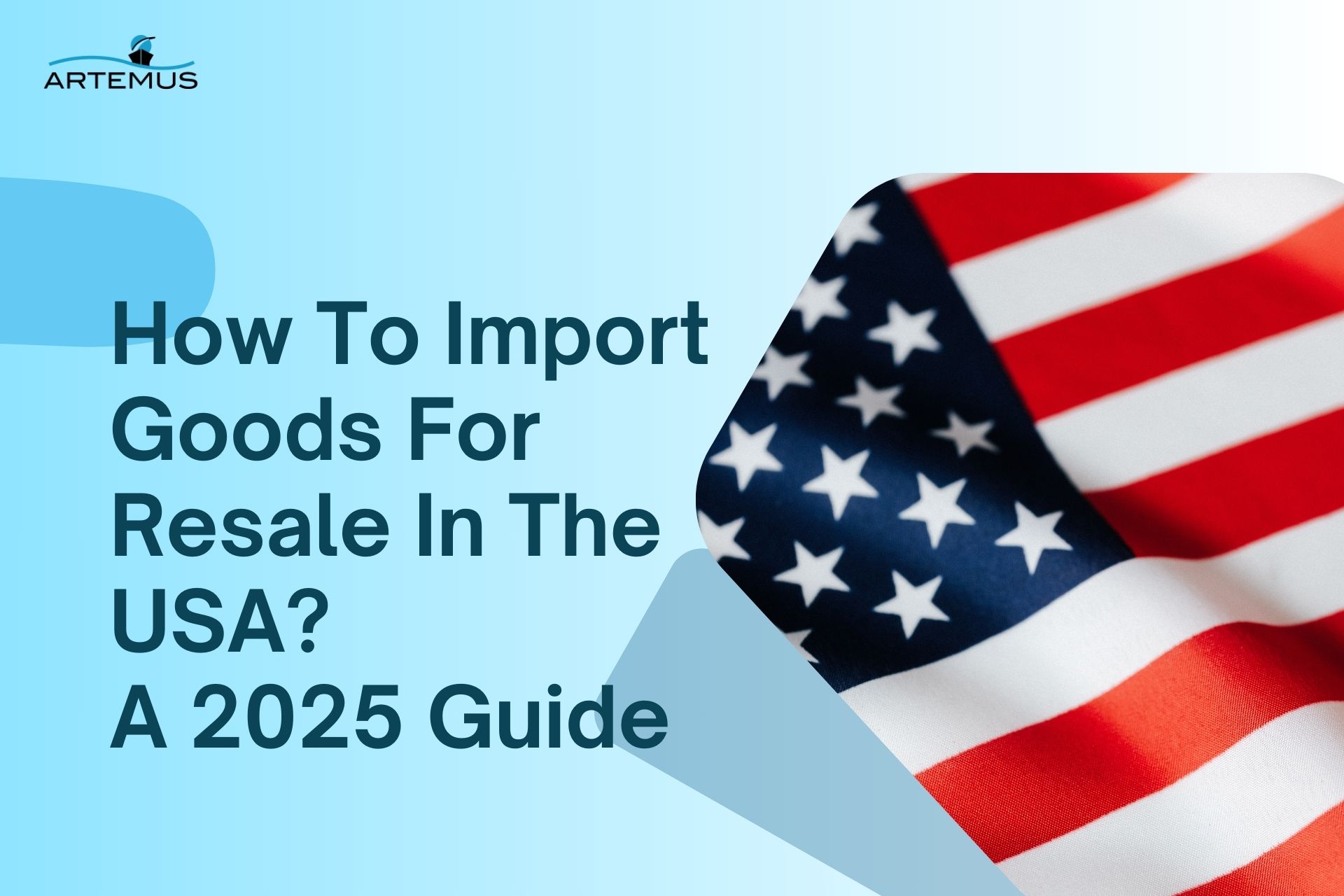
What Is Inbound Logistics & Outbound Logistics? A 2025 Guide
In the dynamic world of supply chain management, understanding the nuances of inbound and outbound logistics is crucial for operational

Are you interested in bringing a car from Canada to the USA? It can be a rewarding experience, but it involves several legal and logistical steps. Understanding these steps is crucial whether you’re new to importing or looking to streamline your process.
First, you’ll need to understand the legal requirements and gather the necessary documents. This will include checking if your vehicle meets all necessary regulations. Once you have the details, you can move on to the next steps and prepare for customs clearance.
Moreover, Artemus Transportation Solutions specializes in making importing easier with ISF (Importer Security Filing) and AMS (Automated Manifest System) compliance support. Artemus software solutions simplify the process, ensuring you comply with regulations efficiently.
Table Of Contents
Importing cars from Canada to the USA involves several steps and considerations. Here’s a detailed step-by-step process:
Once the vehicle clears customs and meets all US requirements:
Related: How To Import A Car To The United States? 2024 Regulations
Checking if your car is eligible for shipping from Canada to the USA involves verifying compliance with both Canadian and US regulations. Here’s how you can determine eligibility:
Customs Broker or Import Specialist: Consider consulting with a customs broker or import specialist who is familiar with US import regulations. They can help determine if your vehicle meets eligibility criteria and assist with the necessary paperwork.
Model-Specific Regulations: Some vehicles may have unique requirements based on their make, model, or year of manufacture.
Recalls And Safety Issues: Check if the vehicle has any outstanding recalls or safety issues that need to be addressed before importing to the USA.
In some cases, a physical inspection of the vehicle by authorized personnel may be required to verify compliance with US standards.
Related: Top 10 Items Exported From India To USA: A 2024 List
Importing a car from Canada to the USA involves gathering several important documents. Here’s a list of the commonly required documents:
The bill of sale provides information about the purchase transaction and serves as evidence of the vehicle’s value.
You’ll need to provide documentation that proves the vehicle meets the required safety and emission standards in the USA. This may include a Manufacturer’s Certificate of Origin (MCO), emission compliance certificate, or compliance letter from the vehicle manufacturer.
Various customs forms need to be completed, including the Vehicle Import Form (HS-7), the EPA Form (3520-1) for emission compliance, and the DOT Form (HS-7) for safety compliance.
Carry your passport or other identification documents to establish your identity and citizenship.
Additional documents may be necessary, depending on the particular circumstances. These can include insurance documents, previous registration papers, and any relevant permits or licenses.
Related: Exporting Mangoes From India To The USA: How To Ship?
Importing a car from Canada to the USA incurs various costs, including taxes, fees, duties, and potential expenses for compliance modifications. Here’s a breakdown of the approximate costs involved:
Total costs for importing a car from Canada to the USA can vary widely but typically range from $1,000 to $3,000 or more, excluding the purchase price of the vehicle itself. This estimate can increase significantly if the vehicle requires substantial modifications to meet US standards or if there are additional fees or taxes applicable based on specific circumstances.
Related: How To Import From China To USA In 2024: Process & Costs
When importing a car from Canada to the USA, choosing the right destination port is crucial for ensuring a smooth and efficient process. Here are some of the key ports in the USA where cars imported from Canada can be received:
The Port of Seattle is a major hub for international trade on the West Coast. Its proximity to Canada makes it a convenient destination for car imports, offering robust infrastructure and efficient customs processing.
One of the largest and busiest ports on the East Coast, the Port of New York and New Jersey is a prime destination for vehicles imported from Canada. It provides extensive facilities and streamlined customs procedures to handle large volumes of car imports.
Known for its specialized vehicle-handling facilities, the Port of Baltimore is a popular choice for importing cars from Canada. It boasts a dedicated auto terminal, making it an efficient and reliable option for car imports.
As the largest port in the USA, the Port of Los Angeles offers extensive resources and facilities for importing vehicles. Its strategic location on the West Coast makes it an ideal entry point for cars coming from Western Canada.
The Port of Miami is a key gateway for international trade in the southeastern USA. It offers comprehensive services for vehicle imports and is well-suited for cars shipped from Eastern Canada.
The Port of Houston is one of the busiest ports in the Gulf Coast region. It provides excellent facilities and efficient customs processing for vehicle imports, making it a viable option for cars coming from Canada.
Known for its fast-growing auto import sector, the Port of Savannah offers modern facilities and efficient services for car imports from Canada. It is strategically located to serve the southeastern USA.
Related: How To Import A Car From Japan To USA? A 7-Step Process
Importing goods can be complex, but with the right approach, you can ensure a hassle-free process. Here are five essential tips to help you navigate the import process smoothly:
Before you begin importing, take time to understand the rules and requirements of both the exporting and importing countries. This knowledge will help you comply with customs and import laws, avoiding delays and potential fines.
Partner with an experienced importer or customs broker who understands the import process. They can assist with paperwork, customs clearance, and logistics, making the process more efficient and less stressful for you.
Evaluate different shipping methods, such as air freight or sea freight, based on your budget and the nature of your goods. Select a reliable shipping provider that offers tracking and insurance options to protect your shipment during transit.
Research and budget for customs duties, taxes, and other fees applicable to your imported goods. Understanding these costs upfront will help you avoid financial surprises and ensure you can meet all necessary obligations.
Related: Shipping From China To USA: All You Need To Know In 2024
Canadian cars have become quite popular on American roads, offering a mix of style, efficiency, and reliability that appeals to many drivers. Here’s a look at some of the most well-liked Canadian cars in the USA:
Made in Oakville, Ontario, the Ford Edge is a midsize SUV known for its spacious interior, smooth ride, and advanced technology. It’s a favorite among American families seeking comfort and versatility.
Produced in Alliston, Ontario, the Honda CR-V is a compact SUV praised for its fuel efficiency, practicality, and strong reliability. Its popularity in the USA comes from its comfortable ride and roomy cabin.
Built in Cambridge, Ontario, the Toyota RAV4 is another compact SUV that’s hugely popular in the American market. It’s known for its durable construction, excellent resale value, and hybrid options, appealing to drivers who value reliability and fuel efficiency.
Assembled in Ingersoll, Ontario, the Chevrolet Equinox is a compact SUV known for its comfortable ride, user-friendly technology, and ample cargo space. It’s a top choice for American consumers looking for versatility and affordability.
Made in Windsor, Ontario, the Chrysler Pacifica is a minivan loved for its upscale interior, innovative features like Stow ‘n Go seating, and smooth driving. It’s a popular option among American families seeking practicality and comfort.
Related: Import Motorcycle From Canada To USA: A 2024 Detailed Guide
Artemus Transportation Solutions offers essential ISF (Importer Security Filing) and AMS (Automated Manifest System) compliance support for businesses importing cars from Canada to the USA.
The specialized software streamlines the process by automating documentation and ensuring adherence to U.S. Customs and Border Protection (CBP) regulations. This includes timely filing of ISF data, which is mandatory for all cargo shipments entering the United States, and AMS filings for accurate manifest submissions.
By leveraging Artemus’ expertise and software solutions, importers can navigate the complexities of cross-border logistics more efficiently, ensuring compliance with regulatory requirements and minimizing the risk of delays or penalties at customs checkpoints.
Related: Ocean Transportation Intermediary (OTI): A Shipper’s Guide
Importing a car from Canada to the USA can cost between $1,000 to $2,000 or more, depending on factors like the vehicle’s size, weight, shipping method, and any applicable taxes or duties.
Yes, you can buy a car from Canada and bring it to the US. However, you need to ensure the vehicle meets US safety and emissions standards and complete all necessary paperwork and customs procedures.
Generally, cars manufactured or imported into Canada that are at least 25 years old can be imported into the USA without needing to comply with US Federal Motor Vehicle Safety Standards (FMVSS).

Importing a car from Canada to the USA can be a rewarding endeavor, offering access to a wider selection of vehicles and potentially cost-effective options. However, it requires careful consideration of regulatory requirements, including customs procedures, import tariffs, and compliance with safety and emissions standards.

In the dynamic world of supply chain management, understanding the nuances of inbound and outbound logistics is crucial for operational

In today’s interconnected world, businesses rely heavily on global trade to expand their markets, access new resources, and drive growth.

Importing goods for resale in the USA presents a lucrative business opportunity, but navigating the complexities of U.S. customs regulations,
Get In Touch
Artemus’ Software Solutions for ISF, AMS, Japan AFR, eManifest Canada, & Panama B2B filings.